‘The Jewel of Africa’, Botswana, is hands down one of the best wildlife destinations in the world. It is a must-visit country for those in search of the ultimate safari. From the Okavango Delta to the Kalahari Desert, Botswana is blessed with breathtaking natural beauty! Whether you’re heading to Kasane, the gateway town to the Chobe National Park or Francistown in the north, make sure to know when is the best time to visit Botswana for the best experience!
Essentially, the best time to visit depends on what you’re hoping to see and do. Botswana’s seasons and climate are significant factors that will determine your holiday plans.
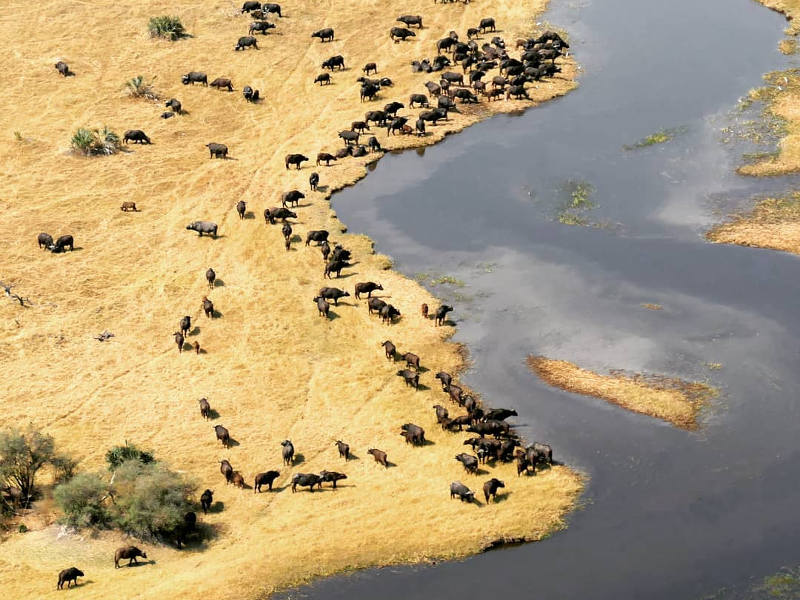
Image courtesy of @manfredlohrbach via Instagram
Weather in Botswana
Botswana has a semi-arid climate with two distinct seasons: wet and dry. The best time to visit Botswana for wildlife viewing and bird watching can differ significantly between the different regions and parks throughout the country.
Wet Season (Summer)
The wet season (November to April), or locally referred to as the ‘Green Season’, is much more pleasant in terms of weather. Average temperatures range between 22°C and 26°C. Encounter lush, emerald landscapes that come with Botswana’s wet summer season. The summer rain transforms the brown winter landscape to an emerald playground. Take in the incredible sights of gigantic trees, much-appreciated shade, beautiful pronounced flowers and shimmering wetlands frequented by water birds and migratory species. The Green Season is the ideal time for photographers as the landscape is enhanced with more vibrant, deeper colours and mesmerising sunsets. The reward of visiting Botswana during this time is fewer crowds and better game viewing. You’ll get to see plenty of newborn animals on safari drives and migratory birds. Many Botswana veterans consider the wet season the best time to visit Chobe and Moremi.
The Green Season sees wildlife such as warthogs, impala and springbok give birth, which means predators make their way to these herds to catch their prey. This is also the best time to visit Botswana’s Kalahari Desert as it comes alive with wildebeest and zebra running in spectacular synchronised patterns across the Makgadikgadi grasslands. The best time to visit Botswana for bird watching is during the wet season. Migrant birds arrive from Europe, Asia and various other parts of Africa.
Botswana’s wet season is considered the best time to visit for its affordability and the magnificent welcoming rains. January and February experience the most rainfall, while November-December and March-April has some intermittent afternoon showers. So, if you’re set on experiencing lush landscapes with fewer crowds, and you don’t mind the rain, then the wet season is the best time to visit Botswana.
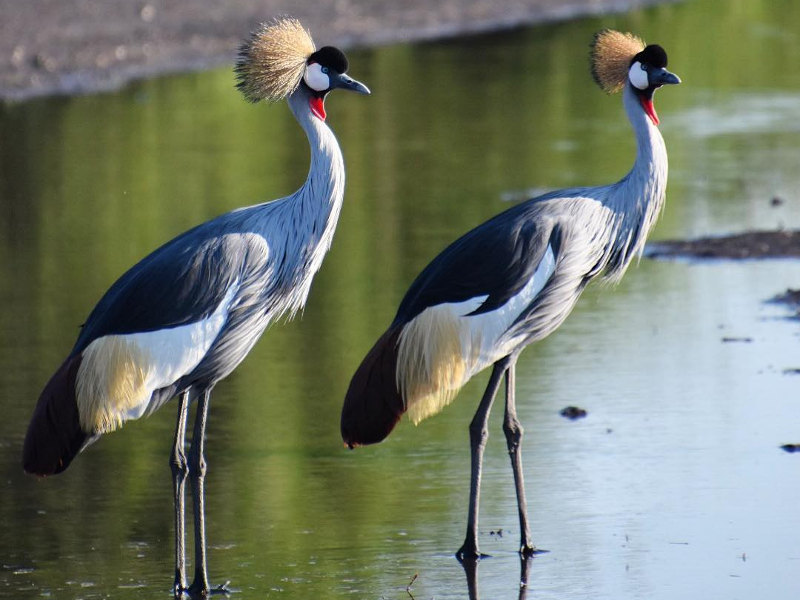
Image courtesy of @janiekshaw via Instagram
The Dry Season (Winter)
The dry season (May to October) is packed with mild temperatures, minimal rainfall, low humidity and fewer mosquitoes. You can expect average temperatures of between 13°C and 17°C. Winter is considered the dry season with nighttime temperatures becoming very chilly, especially in the Kalahari Desert. If you’re determined to travel to Botswana in the heart of the dry winter season, then make sure to pack in plenty of layers of clothing for brisk sunrise game drives and night safaris. The dry season is the best time to visit Botswana for its famed game viewing as the animals are less dispersed and gather at limited water sources while the dry season continues. However, this is also peak season in many parts of Botswana, including the tourist capital Maun. July and August are particularly concentrated with tourists heading to this beautiful country for a taste of adventure and mesmerising wildlife. Prices are at their highest, and you will have to book your safari at least a year in advance. As the flood waters make their way down the Delta, diverse wildlife begin their journey from the dry interior and you’ll see large herds of antelope and buffalo among other surreal wildlife. Temperatures in October can reach 40°C, and if you don’t mind the sizzling heat, this can be a great time for spotting animals such as zebras, leopards and giraffes: the high temperatures make it easier to spot congregations of animals at large waterholes. The high-water levels in the Okavango Delta provides perfect paddling conditions, and it’s the best time to do the iconic mokoro (canoe) safari. Do include Chobe National Park in your Botswana safari itinerary – it has the biggest elephant population in the world!
Off-road motorsport fans should head to the Toyota Kalahari Botswana 1000 Desert Race in June – it is Botswana’s biggest sporting and social event and it involves cars, motorbikes and quad bikes racing across the country.
Average Temperatures in Botswana
| Month | Jan | Feb | Mar | Apr | May | Jun | Jul | Aug | Sep | Oct | Nov | Dec |
| Low °C | 19 | 17 | 16 | 13 | 9 | 5 | 4 | 7 | 11 | 15 | 17 | 18 |
| High °C | 32 | 32 | 31 | 27 | 25 | 22 | 23 | 26 | 29 | 30 | 32 | 31 |
| Rainfall (mm) | 79 | 73 | 82 | 23 | 13 | 5 | 3 | 3 | 11 | 23 | 40 | 48 |
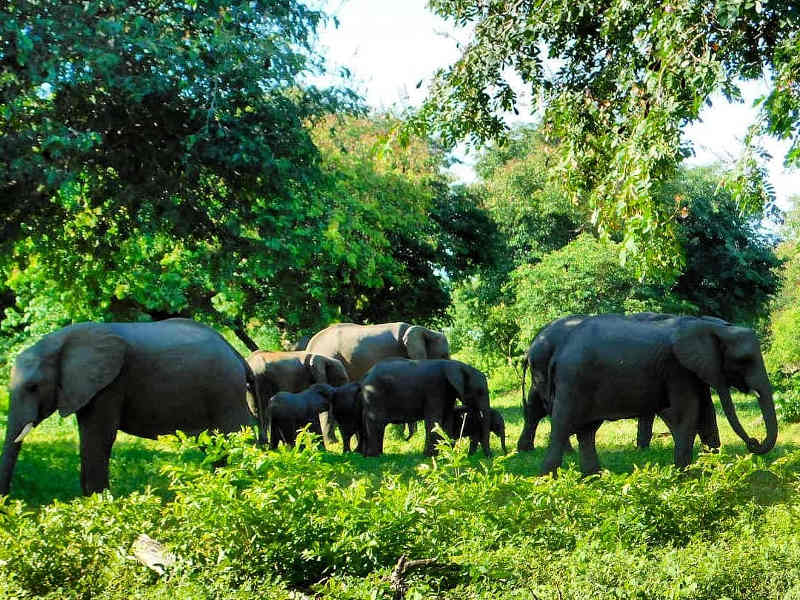
Image courtesy of @knraffa via Instagram
How Much are Flights to Botswana?
Peak Season: July-August
This is prime time for exciting game viewing with the dry season (winter) having the best weather and climate conditions for spotting animals in large groups at waterholes. July and August are the busiest months as it coincides with the northern hemisphere’s summer school holidays. You can expect to pay around 40% more for flights to Botswana, including Gaborone and Francistown. Make sure to book your flights well in advance to get the best deals.
Low Season: December-March
The summer months bring scorching temperatures and heavy rainfall. That means fewer crowds but cheaper prices for flights and accommodation. You can save up to 35% on flights to Botswana during the dry season.
Book your cheap flights to Botswana with Travelstart.co.za
Daylight Hours
Botswana’s longest days are in the summer months. The summer days experience around two more hours more sunshine than in winter. You can expect more than 13 hours of daylight, compared to 11-12 hours of daylight in winter.
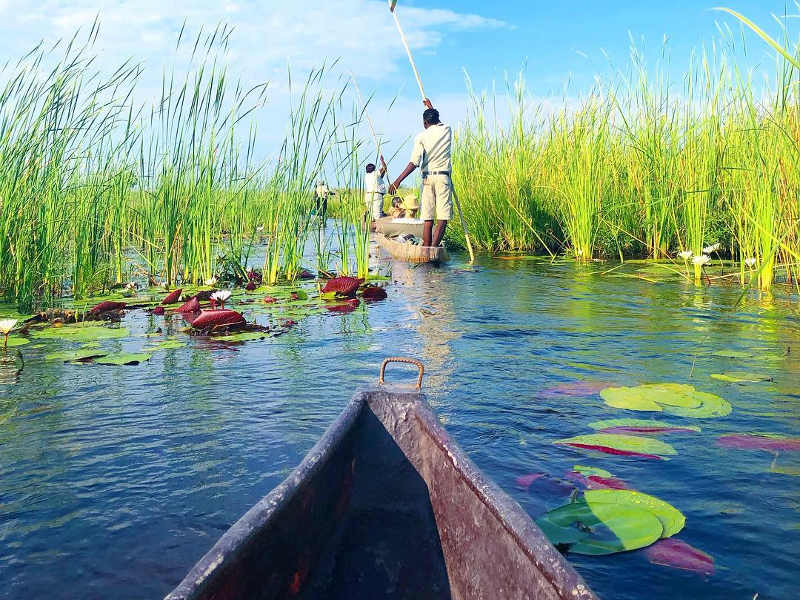
Image courtesy of @kchoedon via Instagram
Annual Events in Botswana
Maitisong Festival – March-April
The Maitisong Festival is Botswana’s biggest arts festival. Taking place in Gaborone, international and local artists come together to showcase their music, theatre, dance, poetry and comedy.
Tjilenje Cultural Festival – May
This annual event is held in Botswana’s northeastern regional town of Nlaphkhwane. The locals celebrate with ancient games, dances, music, and local food and drinks.
Khawa Dune Challenge & Cultural Festival – May
The Botswana Tourism Organisation hosts this annual festival together with the Ministry of Youth, Sport and Culture, as well as Botswana Motor Sport. It is hosted in a small village called Khawa. The festival incorporates sports and a diverse range of fun activities such as camel rides and cultural performances.
Botswana Day – September
This two-day festival marks Botswana’s National Day. There is a military parade to kick off the day’s celebration. The day is marked with traditional events, and street parties filled with dancing and singing.
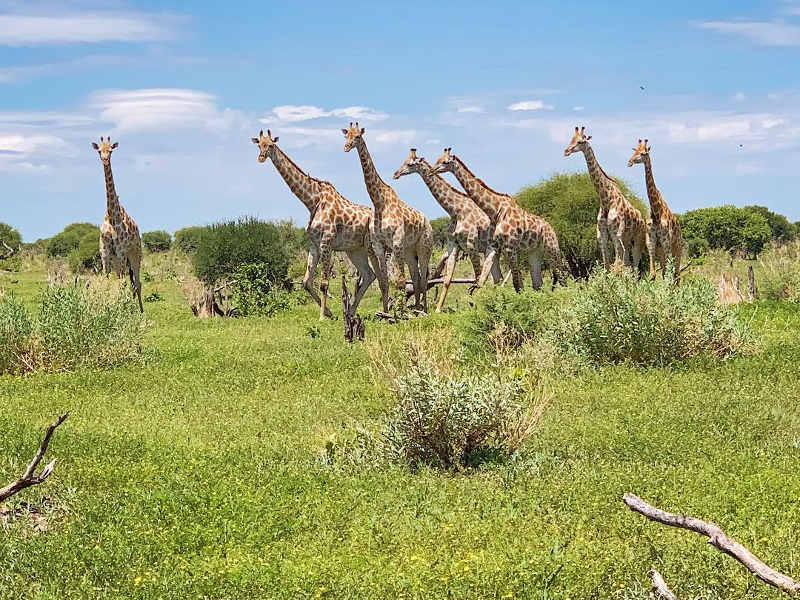
Image courtesy of @no.nostos via Instagram
Botswana is an African destination abundant with beautiful landscapes and experiences that will leave you with everlasting memories. The indigenous cultures and wildlife make Botswana an important destination worth uncovering for yourself. It is clear that each season provides a different perspective of the beautiful landscapes. Decide when you’d like to visit Botswana, book your ticket, and pack your bags for an epic adventure!
Sign up to our newsletter and find the best flight specials to Botswana and other amazing destinations.
Have you recently visited Botswana? Share your experience with us in the comments below.